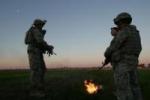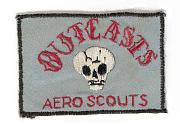Video is posted here. It is a much watch. Here are some of my initial thoughts from Mike's world of Coin. My comments are not to criticize/critique those Marines working their butts off. Rather, it is to provide some of my lessons learned for the group on the tactical level of COIN. I'd like to hear from the group to see if they concur or have better tips to offer.
A couple of thoughts on engaging the populace:
1. The squad leader should take off his body armor, helmet, glasses, and gloves when talking to the locals. Yes, one assumes some risks, but his men can pull perimeter.
2. I always tried to mimick everything my locals did from the way they sit, to how they hold their cigarettes, to how they laugh. It just helps you fit in. In this case, he may need to start squatting instead of standing up lecturing. He's not talking to his joes.
3. I doubt the interpreter issue is one the Marines are happy with. It's probably more of a resource problem (i.e. they can't find enough willing to venture to Helmand Province).
4. Is the commander going out? One of his many roles is to patrol with his boys and find out who's in charge and start to engage him.
On the tactical side (this is more speculation as I'm just monday-morning quarterbacking a video and not on the ground),
1. The squad is throwing down a lot of suppressive fire often without seeing the enemy. It's often better to wait and try to positively identify rather than to spray a mad minute. Listening to the incoming rate of fire, they're probably facing 2 guys with AKs and 1 with a PKM. Just 3 dudes, not 50.
2. Frequency/variation of patrols. In a limited space, it is challenge to NOT get into a routine. When my troop averaged 12 patrols a day at the peak of the Surge, I found myself planning the same patrols at the same time so I switched it. I made my 1SGT, PLs, and PSGs responsible for making the patrol schedule. Then, I could spot check it and ensure we maintained the frequency but kept up the variance. It worked.
3. Ambushes. I'd start having men covertly infiltrate into the treeline at night, dig in, and wait for the Taliban to occupy their ambush position the next day. A second option is to have preplanned indirect targets in known ambush positions. If the Taliban is going there, the locals will stay away, and one does not risk civilian casualties. A third option is to send recce patrols past the treeline to start observing the Taliban's infiltration. They ain't appearing out of thin air.
v/r
Mike















Bookmarks